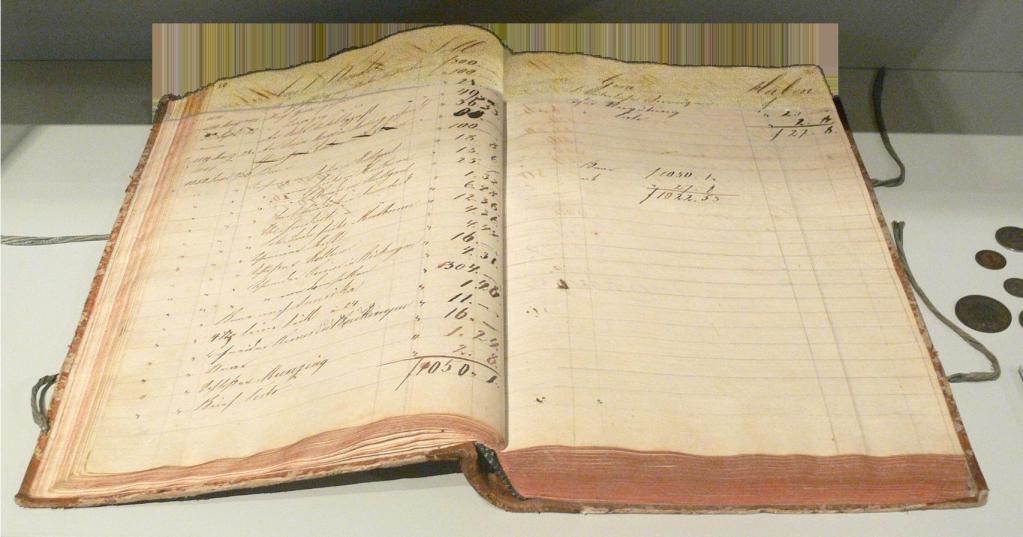The provision for vacation pay, which will be discussed in this article, is an estimated liability, the formation of which is provided for in PBU 8/2010. This regulatory document is central to the study of issues of interest. The purpose of the reflection in accounting and reporting of estimated liabilities, as well as reserves for vacations, is to make reporting reliable and realistic. It should reflect not only short-term obligations that the organization practically assumed, but also those whose implementation will come in the future.
Most employees, on a certain reporting date, have unused vacation days, which, in accordance with labor regulations, the employer must provide and pay (or pay compensation in case of dismissal).
At any reporting date, the organization evaluates obligations to employees (to pay for accumulated unused vacation days) and to the budget (for insurance premiums).
We learn about how to generate the required amount for the tasks of studying the reserve of vacations in accounting in this article.
Value liability concept
Calculations are carried out on the basis of RAS 8/2010 “Estimated liabilities”. In accordance with the provisions of this document, organizations must form certain established and calculated amounts of reserves for vacations in accounting.
In other words, financial statements should contain not only information about the documentary obligations of the company to contractors and third parties, but also information about the intended costs that are inevitable.
These include:
- Future vacation staff.
- Planned tax accruals.
- Costs by supplier.
With the provision of this information, the balance becomes reliable, as it reflects a closer to reality picture of the financial situation of the company.
Let’s take a closer look at the concept of vacation allowance.
In accordance with labor regulations, each employee has the right to 28 calendar days of vacation, and in a number of legislative cases this figure may be larger.
At each reporting date, the company has accumulated vacation days that have not yet been used by employees. Accordingly, at a certain reporting date, the company's responsibilities to employees for paying these days and to funds for paying insurance premiums are assessed.
In accordance with paragraph 3 of PBU 8/2010, all companies must reflect these accruals, except for small firms that can use the lightweight accounting method in accounting.
The list of classification criteria of such organizations is specified in the Law "On Accounting" dated December 6, 2011 No. 402-ФЗ.
If the company does not meet the definition of a small business, the accrual of valuation reserves becomes mandatory. The lack of this information in the accounts may be interpreted by authorities as non-compliance with the norms of accounting for income and expenses.
If the company allocates funds to pay the reserve for vacations, then this must be registered in the accounting policy as well. The order of its calculation is also reflected there.

Why create a reserve
Above, we found out that in each company costs should be formed to pay the reserve for vacations. The exception is small forms of organizations. They may not determine future vacation costs. In tax accounting, provisioning is a company right, but not an obligation.
If the organization determines the reserve for both accounting and tax accounting, in any case, differences will arise in PBU 18/02.
The bottom line is that the calculation rules are different. In accounting, a reserve is needed to take into account the company's obligation to pay a vacation fee for the remaining days that the employee has already earned. This is equal to the estimated amount of vacation pay that employees should receive. And the purpose of the tax reserve is to help the organization moderate write-offs on vacation costs for employees. In order to calculate the monthly amount of deductions, the real labor costs must be multiplied by a certain percentage.
If the company does not create a mandatory reserve for leave in accounting, the officials responsible for this will face fines, which are interpreted as gross non-compliance with the norms of accounting for income and expenses. In 2016, the amount of these sanctions increased several times.
Accounting concept
The allowance for vacation pay is recognized as a provision. It is formed on the basis of the rules that were provided for in article 324.1 of the Tax Code of Russia.
The allowance for vacation pay is calculated based on the average earnings of employees. In this case, insurance payments should also be taken into account. The following terms are proposed for forming a vacation reserve:
- On the last day of the month.
- On the last day of the quarter.
- On the last day of the year.

Accounting reflection
Operations with the reserve for vacation pay are carried out in accordance with the provisions of PBU 8/2010 “Estimated liabilities, contingent liabilities and conditional assets”.
In accordance with paragraph 4 of PBU 8/2010, an assessment obligation is one for an organization with an indefinite amount and a period of fulfillment that may arise based on regulatory and legislative acts.
By virtue of Art. 114. 122 of the Labor Code of the Russian Federation, the employing organization must provide personnel with annual leave while maintaining their place of work (position) and average earnings. Payments for the provision of annual paid leave are one of the cases when the employer provides guarantees that are carried out at its expense.
Since these costs are the obligation of the employer, which were established by labor regulations, the provision for vacation pay is recognized as an estimated liability. It is recognized in the financial statements of the organization in an amount that reflects a more reliable monetary estimate of the costs necessary for its calculation.
In accordance with paragraph 8 of PBU 8/2010, accounting for reserves for vacations is reflected in account 96 “Reserves for future expenses”. If the estimated liability is recognized depending on its nature, the amount is charged to the costs of the ordinary activities of the company. There is another option for their inclusion in the price of an asset.
The most reliable cost estimate is the amount needed to pay off the obligation at the reporting date or to transfer it to another person.
The established recognition procedure and the method for determining the value (in accordance with RAS 8/201) are not established. On the basis of paragraphs 4 and 7 of PBU 1/2008 “Accounting policy of an organization”, the company, without the help of others, develops and establishes in its own accounting policy a method for calculating the estimated reserve for vacations and the procedure for its recognition (once, every quarter, every month).
The calculation of the value of the estimated liability for the holidays should be subject to the calculation of insurance premiums.
The organization is obliged to provide documentary evidence of the validity of the assessment of this indicator.
The calculation of the reserve of vacations and the reflection of the provision on the provision of this period for employees in the accounting reports should be made at each reporting date. In accordance with the current requirements of the legislation, the balance sheet is prepared once a year on December 31.
However, it will more accurately and more correctly (mainly for managerial accounting) create reserves for vacations on a monthly basis, since this type of cost depends on the number of employees and vacation time. These values can change frequently.
A monthly calculation of the vacation reserve takes a lot of time. The organization needs to independently calculate the desired frequency of such work.
In accounting, a record of account 96 is created to reflect information about reserves for vacation pay. It accumulates all the intended costs of the company. For each type a special sub-account is opened.
Postings
Consider the usual vacation reserve entries for accrual and write-off of reserves in accordance with the account in account 96 in the table below.
| Dt | Score | Ct | Description |
| 08 | Fixed assets | 96.01 | Accrued vacation allowance in the unit |
| 20 | Primary production | 96.01 | -"- |
| 23 | Auxiliary production | 96.01 | -"- |
| 26 | General expenses | 96.01 | -"- |
| 44 | Selling expenses | 96.01 | -"- |
| 69 | Settlements with extrabudgetary funds | 96.01 | Assessment of fund insurance premiums |
| 96.01 | Reserve for vacation pay | 70 Labor costs | Accrual of vacation pay from the reserve |
| 96.01 | -"- | 69 | Vacation insurance premiums accrued |
The reserve is constantly accrued on the same accounts as the salary of employees. Insurance payments are charged according to the same principle, but in correspondence, taking into account the reserve, and not with settlement accounts with extrabudgetary funds.
The balance on the 96 account of the vacation allowance in the reporting should be reflected in the balance sheet liability. For this there is line 1540 “Estimated liabilities”.
If reserves for upcoming vacations in the organization are created only in accounting, then the basis for calculating income tax does not decrease, but temporary tax differences appear. If the accounting policy of tax accounting reports that these costs are taken into account when calculating income tax, it becomes possible to make it in the manner specified in Art. 324.1 of the Tax Code.
Creating a reserve for tax purposes is a voluntary moment, depending on the decision of the business entity.

Calculation Method
Since the formula that is used to calculate the amount of the reserve is not defined, any company forms it independently.
In this case, the developed method should be established in the accounting policy.
The reserve should be determined on the basis of the facts of the organization’s business, and the calculation must be justified on the basis of the company's experience (and possibly on some expert opinions).
In other words, the calculations must be supported by documents, be reasonable, logically justified and rational.
In order to prove during the verification the amount of accrued reserves for vacation pay, the organization must have the following documents:
- The method for calculating the reserve established in the accounting policy, which will provide the company with a reliable estimate of the value of this obligation.
- It is necessary to develop a primary document, which should reflect the calculated reserve. To do this, you need to attach the initial documents, information for the calculations (a sheet of working time, wages and so on).
There are several methods for calculating the allowance for vacation pay. Consider one of them, which is quite accurate, since it is based on the calculation of the real number of unused vacation days and the average daily income of employees:
- All employees of the enterprise should be divided into departments (departments) to determine the accounts applicable to them (20-26, 44 and so on).
- You need to have data on the number of vacation days that each employee needs. Determine the reserve of vacations in 1s is not difficult.
- We calculate the average daily income (SD) of employees for each group. To do this, you need to divide the entire salary of employees for the past selected period (month, quarter) by the number of calendar days in this time period, and then by the number of people in each identified group.
The formula is as follows:
SD = ЗП / ДН / K,
where: ZP - salary for the period (rubles).
NAM - calendar days of the period.
K is the number of employees in the group (or the company as a whole).
Calendar and business days should not be confused. This is very important to keep under control, since the length of the period when a person should be on vacation is constantly taken into account in calendar days.Therefore, the income for calculating the duration of the vacation should also be taken into account in calendar days.
Calculation of the amount of the reserve itself (taking into account insurance payments from this reserve)
The total amount of the reserve will be calculated using the following formula:
P = (SDZ × K × BOTTOM) + (SDZ × K × BOTTOM) × SST,
where: P - reserve (rubles).
BOTTOM - vacation days that are not used.
Сst - insurance premium rate (%).
A more accurate way to calculate the reserve will be calculations that are carried out personally for each employee.
In this case, the final value will consist of the amount of obligations to each employee. If the number of employees in the company is large, this process will be quite time-consuming.

Vacation reserves and calculation example
To better understand the above material, consider the calculation in the fictional organization “Start”. Suppose she reflected in the accounting policy that the reserve for leave is paid every quarter. To determine salaries and insurance premiums, account 44, “Costs of circulation,” is used. The company employs 20 people. It has no reason to introduce lower or higher insurance rates (the total premium rate is 30.2%). As of March 31, 2017, data for the quarter are as follows:
- The number of days of unused vacation is 134.
- For the 1st quarter, the amount of accrued salary amounted to 678,000 rubles.
- 91 days in a quarter.
Calculation Method:
1. Calculate the reserve on 03/31/2017:
SDZ = 678 000/91/20 = 372.53 rubles.
The size of the reserve is 372.53 × 134 × 20 + 372.53 × 134 × 20 × 30.2% = 998 380.40 + 301 510.88 = 1,299,891.28 rubles.
For the provision for posting holidays:
Dt 44 “Costs of circulation” Kt 96.01 - 998 380,40 rubles.
Dt 69 "Extra-budgetary funds" Kt 96.01 - 301 510.88 rubles.
2. Add additional data to our example to find out how vacation allowance is adjusted:
- As of March 31, 2017, reserves and insurance payments were provided in the amount of 1,299,891.28 rubles.
- In the 2nd quarter, the sum of accrued holidays and insurance premiums from them amounted to 140,900 rubles.
- The number of unused vacation days at the end of the second quarter is 120 days.
- The salary for the 2nd quarter and the number of employees remained the same as in the previous period.
As a result, as of June 30, 2017, the amount of the unused vacation amount of the reserve is 1299,891.28 - 140,900 = 1,158,991,28 rubles.
The same indicator as of June 30, 2017:
SDZ = 678 000/91/20 = 372.53 rubles.
The size of the reserve is 372.53 × 120 × 20 + 372.53 × 120 × 20 × 30.2% = 894 072 +270 009.74 = 1,164,081.74 rubles.
The amount of contributions to the reserve at the end of the second quarter:
1,164,081.74 (estimated reserve) -1,158,991.28 (reserve balance, account balance 96) = 5,090.46 rubles.
If the amount of the reserve in account 96 has exceeded the estimated amount at the end of the quarter, the costs should be reduced. In our case, you need to pay an additional fee.
Postings:
Dt 44, 69 thousand Kt 96.01 - 5,090.46 rubles.

Tax accounting
The question of how to calculate the reserve of vacations in tax accounting, we consider further.
Let's start with the provision on vacation pay in tax reporting. It can only be created by companies on an accrual basis.
Accordingly, organizations on the STS or NVD do not have this capability.
To find a reserve, you first need to calculate two estimates for the next year.
Firstly, this is the sum of vacation pay. Secondly, wages. Both values include insurance payments.
We calculate the percentage of deductions to the reserve according to the formula:
PO = O / ZP,
where: PO - percentage of deductions to the reserve.
About - the approximate amount of vacation pay for the next year and insurance payments.
RFP - planned salary costs in the coming year, including insurance payments.
The company will create deductions to the reserve and include them in tax costs every month, starting in January.

Inventory
At the end of the year (usually December 31), it is fundamentally important to take an inventory of the reserve and compare the accumulated over the year costs and real vacation costs. The difference may be included in the remuneration.
And what if the company did not use the reserve at all? Everything will depend on whether she plans to charge it next year or not.
If the company does not charge a reserve, it will include surplus in income.
If the organization decided to create a reserve for the next year, then the order of accruals varies. A company cannot include a certain portion of costs in revenue.For you need to find employees who have not fully used their vacation days scheduled for this year. Then calculate the amount of benefits for their holidays, taking into account payments that are useful for payment at this time.
The result of the calculation will be the balance of the reserve, which can be carried forward to the next year.

Conclusion
Accrual of reserves for vacation pay in accounting is a labor-intensive process. However, it is needed both for managers (for making the right financial decisions), and for accountants (for fulfilling the conditions of the law).
It should be noted that the creation of reserves for vacations is an obligation for large companies and a voluntary act for small organizations. However, many large organizations ignore this requirement and do not create reserves, which ultimately leads to errors and inaccuracies in the reports. The factors that determine the creation of the reserve include: the frequency of calculating the amount of the reserve, the number of days of unused vacation by employees, the average wage.
The main difference between accounting and tax accounting of reserves for vacations is that in accounting, the presence of costs is an obligatory element. If you ignore this indicator, the company will be sanctioned. In tax - the choice is the leadership of the company itself.
The main norm that governs the accounting of reserves is PBU 8/2010. However, there is no clear algorithm for calculating the indicator. Companies form such an algorithm on their own and fix it in the materials of accounting policies.
